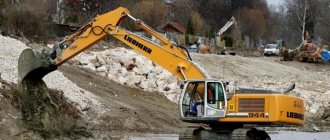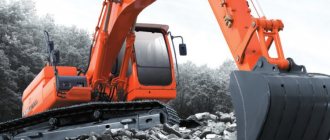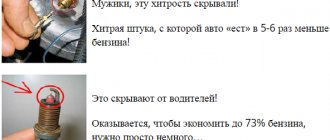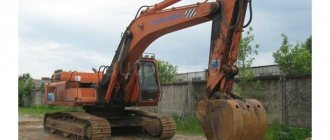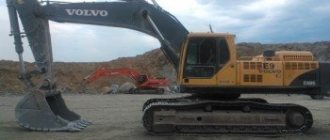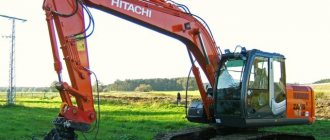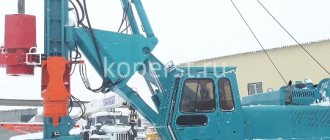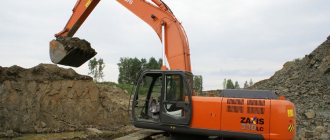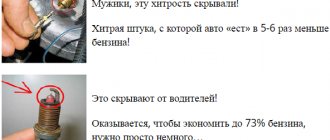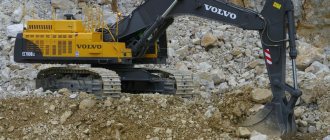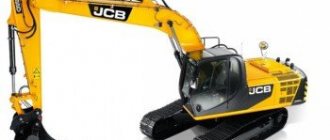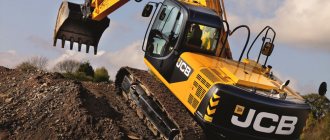The Liebherr 934 crawler excavator is heavy special equipment made in Germany. This model is representative of the middle class. Serial production of this excavator is carried out by enterprises located in Switzerland and Germany. The equipment can operate properly in rather harsh climatic conditions, namely at temperatures from minus 40 degrees Celsius to plus 40 degrees Celsius. The machine has a modern C Litronic hydraulic system, thanks to which not only high performance characteristics have been achieved, but also maintenance has been simplified, since all its elements are automatically lubricated.
Description and features
The key advantages of the Liebherr 934 crawler excavator are reliability, environmental friendliness and fairly high productivity. The tracked base has significantly increased the stability of the equipment, thanks to which the excavator can be used on soils with reduced bearing capacity. But besides this, the tracked platform also has one drawback, which is the low speed of independent movement, which is why the equipment is transported to the work site using a special trailer and tractor, which, however, is typical of any other tracked equipment.
Most of the power of the power unit, namely about 70 percent, is directed to the working equipment of the excavator, which ensures the most dynamic and efficient performance of any operations. As standard, the excavator is equipped with an earth-moving bucket, but the handle design allows for the installation of other additional equipment. The manufacturer offers a hydraulic breaker, a three-prong knife, a ripper, a hydraulic grab, grab equipment and many other types of attachments.
The design of this excavator has standard lubrication lines. Points that require regular lubrication, as well as working equipment in this model, have one common area, which greatly simplifies the maintenance process.
During the development process, the manufacturer used many innovative technological developments, thanks to which the technology has gained great popularity in many countries around the world. The time required to complete a complete work cycle has been significantly reduced, resulting in increased efficiency and productivity of the model. It is worth noting that in this regard, the Liebherr 934 crawler excavator is one of the best in its class.
Many parts used in the design of the excavator are highly reliable and have an extended service life, which is due to the use of high-strength, high-quality steel. The nodes that experience the greatest stress during operation are equipped with steel castings, and the longitudinally located beams have an X-shaped design.
Also, in its class, the model is distinguished by the highest quality and enormous productivity, which allows you to do absolutely any type of work, regardless of their degree of complexity.
The hydraulic system used is electronically controlled, which makes various operations easier. The excavator has independent hydraulic circuits, which make it possible to use several working bodies at once. Thus, the operator can perform various manipulations of the boom equipment and at the same time move around. All circuits have the function of connecting hydraulic fluid flows, which allows increasing the working pressure in the hydraulics, and with it speeding up the work process and increasing the breakout force. The Liebherr 934 model has its own hydraulic pump, which rotates the entire superstructure. This solution also made it possible to reduce the time of the full working cycle. In order to quickly and safely lower mechanisms and reduce pressure loss in hydraulic circuits, the manufacturer used the modern ReGeneration Plus system.
In general, the hydraulic system has very impressive efficiency, since it contains the following mechanisms:
- A hydraulic accumulator that lifts and lowers working equipment when the engine is turned off.
- Several systems that control the performance of all hydraulic pumps.
- A special switch thanks to which the operator can select the most suitable engine speed for performing any work.
- Special split flange.
The design of the crawler bogie of this model was supplemented with longitudinal X-shaped beams, which have an increased service life and high reliability. In particularly critical areas, such as, for example, the location and fastening of working equipment, the manufacturer used parts made of steel with fairly high strength. All hinge joints of the handle and boom were made of cast steel, thanks to which this element received impressive durability. In order to optimally distribute the load during operation, the excavator design was equipped with special hinges with separate axles and a body.
The Liebherr 934 crawler excavator has a high-performance powertrain that is paired with a continuously variable transmission. The use of such a gearbox had a rather positive effect on control, since it became much easier to control the movement of equipment. However, the maneuverability and mobility of the excavator suffered, although not significantly.
When purchasing a new excavator, the manufacturer offers several configurations. The main differences between them are the capacity of the installed bucket, as well as the presence or absence of a special hook designed for lifting any cargo or drilling equipment.
Another distinctive feature of this model is the spacious and large cabin, which is made taking into account all modern requirements. The installed seat is equipped with several adjustments and special protection in case of various emergency situations, such as, for example, a car tipping over. Double durable glass was used as glazing, providing an increased level of safety and excellent visibility of the work site. The working parts of the excavator have been very thoughtfully located, allowing the operator to control maximum space outside the cab.
A color LCD screen with brightness adjustment is installed inside the cabin. It displays all the main parameters of the equipment, providing maximum control over the condition of the excavator. In order to increase the accuracy of movement of the working equipment, the controls have received fairly good sensitivity, which also allows the operator to make less effort to perform any manipulations. In addition to all this, the cabin is equipped with an hour meter, emergency exit, rear-view mirrors and windshield wipers. The standard equipment of this piece of equipment includes an ashtray and a cigarette lighter, a special compartment for storing the operator’s personal belongings or service tools, a modern radio, a floor path, microclimate systems (heater and air conditioner), as well as a coat hook. As additional options, a special protective grille is available, installed from the outside in the front part.
The large free space of the cabin allows the operator to work not only while sitting, but also while standing, which additionally affects convenience. The cabin boasts an ergonomic dashboard and all working parts. There are a lot of different electronics that provide constant control of the machine. If any problems are detected, a corresponding notification will immediately appear on the screen.
The Liebherr 934 excavator currently has quite a few competing models from other manufacturers, however, due to many of its own design features, this particular model is the most popular.
Excavator Liebherr 934: purpose
The model is used in industrial and urban construction, during dismantling and demolition of structures, and in transshipment works. Construction companies use an excavator in loading and unloading operations. The length of the bucket arm allows you to work efficiently while remaining in one place. Depending on the tasks, the customer can choose buckets with different capacities - from 0.7 to 2.25 m3. There are modifications for this model: 934C, 934 HDSL. These versions are created for specific tasks and have alternative power units.
70% of the engine power of a Liebherr excavator goes to operating the equipment, so the model performs tasks dynamically. In addition to buckets, additional equipment can be installed on the excavator - a knife with three teeth, a hydraulic hammer, a ripper, etc. The use of the Litronic hydraulic system reduces fuel consumption and simplifies machine maintenance, since lubrication occurs automatically.
The excavator runs on heavy diesel fuel. The crawler track reduces fuel costs and also provides increased stability on loose rocks. The disadvantage of the tracked system is its low speed, which makes it necessary to deliver an excavator to the work site.
Modifications
In addition to the basic model, modified versions are also available, which are known under the symbol 934 HDSL and 934C. Both modifications are equipped with different power plants, which are initially configured for certain operating conditions. Let's look at each modification:
Modification of Liebherr 934C. This model is designed to work in fairly stressful conditions. It is worth noting that the version is available in a wheeled version and has special tires that provide excellent traction on the surface of any type of soil, and the function of controlling both axles. The function provides three modes: in the first, the equipment uses both axles, in the second, only the rear axle is driven and the front wheels perform braking, and in the third, the rear axle is also used, but braking occurs due to all wheels. Optionally, the model can be equipped with a special cabin lifting device, which provides improved visibility of the workspace. Often this modification is used in conjunction with a hydraulic grab for wood handling.
Modification of Liebherr 934 HDSL. This version is also a tracked model, differing from the base excavator only in overall dimensions and, as described earlier, in the power plant. The scope of application of the Liebherr 934 HDSL version is very wide, since the equipment can use many additional units.
Iron storks
Reloaders came to us not so long ago, about 20 years ago, along with the flow of imported equipment. Their main function is the transshipment of bulk cargo, scrap metal, garbage, assortment, etc. at stations, warehouses, ports, scrap metal collection points, and solid waste processing plants. Previously, the function of loaders was performed by cranes of various types and conventional excavators.
Most material handlers are mobile - on a wheeled chassis with or without a pylon; there are also machines on a tracked chassis. When working continuously at one point, stationary material handlers are used. Reloaders differ from construction excavators not only in their working equipment, but also in their more powerful hydraulic drive, lifting cabin, reinforced chassis frame and slewing support. A hydraulic lift or a rigid spacer can be used to increase cab height. The roof and windshield are equipped with mesh guards to protect the operator. For material handlers, a structural element such as a pylon is used - a cylindrical column inserted between the chassis or foundation and the turntable in order to raise the platform.
The market for material handlers is narrow; a limited number of companies are involved in their development and production. The Russian market is about fifty cars a year. It is gratifying that domestic mechanical engineering is represented in this segment. European mechanical engineering is represented by factories of Liebherr, Sennebogen and Caterpillar. Reloaders are also present in the JCB and Volvo CE model ranges, but they are practically not supplied to Russia, citing the narrowness of the market.
Tverskoy Excavator serially produces two models of material handlers, or, in the plant's terminology, industrial loaders - wheeled EK-18-50 and tracked ET 26i.
Reloaders are positioned as lifting equipment with corresponding working parts, differing from earth-moving excavators only in the working equipment and the cab lifting mechanism. In some cases (when installing working bodies with increased volume or weight parameters compared to the recommended ones), a load limiter is installed. Technical characteristics of TVEX material handlers
| Parameter | EK-18-50 | ET-26i |
| Engine | D-245 | YaMZ-236M2-7 |
| power, kWt | 90 | 132 |
| Speed, km/h | 15 | 5,3 |
| Boom radius, m | 10 380 | 11 030 |
| Overall dimensions, mm | 9300/ 2500/ 3350 | 10 270/ 3000/ 2960 |
| Operating weight, kg | 21 400 | 26 600 |
Tver material handlers are equipped with specialized industrial working equipment, a grab with a rotator, and a lifting cabin with a parallelogram-type lifting mechanism. To start in cold weather, an engine heater “Gidronik 10” or “Teplostar” is installed, and a comfortable temperature in the cabin is ensured by a Zenit water heater or an autonomous heater “Airtronic”. Air conditioning can be installed as an option. As standard, the material handlers are equipped with a Lincoln centralized automatic lubrication system.
- EK-18-50 is a mobile and affordable machine, built according to the canons of European material handlers based on the EK-18 wheeled excavator. The machine can be aggregated with various replaceable working equipment - a five-jaw grab for bulk and non-bulk cargo, a log grabber with a rotator, a magnetic plate. The LUDV work equipment control system was used on Bosch Rexroth equipment, which allows you to effectively combine operations. The working equipment and chassis frames are reinforced. The vehicle is capable of traveling on public roads at speeds of up to 15 km/h. Operating conditions – in the temperature range from –40 to +40 °C. The second pair of numbers in the name is the modification index; the plant does not stop working on the design and configuration of the machine. The modernized EK-18-50 material handler differs significantly from the previous version EK-18-48:
- the voltage of the on-board electrical network has been increased from 12 to 24 V;
- MMZ D245.2S2 engine with increased power from 77 to 90 kW was used. Improved cold start conditions and engine management system;
- The rigidity of the cabin has been increased and its insulation from precipitation has been improved;
- To connect the grabs, quick-release connections are installed on the pipelines of the working equipment, which will allow the use of shorter hoses and facilitate the installation and dismantling of any working parts. Control of rotation of the working body has been moved from the pedal to the button of the left joystick, which also increases the operator’s convenience;
- for the operation of the magnetic plate, a generator with a more reliable drive system is installed;
- In the hydraulic tank, at the outlet of the working fluid, a Parker filter with a filtration fineness of 10 microns is installed. This significantly improves oil purity and reliability of Bosch Rexroth hydraulic equipment. The design of the filter allows it to be replaced without draining the working fluid and contaminating it, which significantly reduces the cost of owning the loader;
- A more efficient working fluid cooler has been used.
- To increase the stability of the machine when working on folding supports, rotary legs are used, and to prevent damage to the rods, protective shields are provided on the outrigger hydraulic cylinders.
The ET-26i loader is built on the basis of the “senior” model of the Tver line – the ET-26 crawler excavator. The machine is less mobile than a wheeled one, but is more productive and, thanks to its tracked chassis, is adapted to work with scrap metal, crushed stone, and crushed rock. It is possible to unite the machine with various replaceable working equipment - a log grab, a grab (two-jaw for bulk materials, four- or five-jaw for scrap metal), a magnetic plate. A throttle control system for Bosch Rexroth work equipment is used.
The machine uses a full set of Bosch Rexroth hydraulic equipment - pump, hydraulic distributor, hydraulic motor, travel gearboxes and rotary mechanisms. Tracks with shoe widths up to 900 mm can be installed. The operating conditions of the equipment are in the temperature range from –40 to +40 °C.
Liebherr produces a wide range of wheeled and tracked material handlers.
Having similarities with both cranes and excavators, Liebherr material handlers combine all the vast experience the company has accumulated in the production of these types of equipment. At the same time, the basic concept is taken from an excavator; productivity (the mass of products moved per unit of time) is at the forefront, and not lifting characteristics, like a crane. Material handling machines are produced on our own production lines, inheriting the power and productivity of excavators. Technical characteristics of Liebherr wheeled material handlers
| Model | power, kWt | Boom radius, m | Weight, kg |
| A 316 | 94 | 10,0 | 20 600–21 600 |
| A 904 C | 105 | 12,5 | 19 975–25 125 |
| A 904 HD | 105 | 12,5 | 24 400–25 500 |
| A 924 C | 129 | 13,7 | 27 150–28 850 |
| A 924 C HD | 129 | 13,7 | 31 550–33 450 |
| A 924 C HD (log loader) | 129 | 11,9 | 29 000 |
| A 934 C | 150 | 14,5 | 36 300–37 200 |
| A 934 C ERC | 129 | 14,5 | 37 950–38 250 |
| A 934 C HD | 150 | 14,5 | 41 150–42 400 |
| A 934 C HD ERC | 129 | 14,5–18,0 | 41 900–42 800 |
| A 934 C HD (log loader) | 150 | 12,5 | 36 450–37 650 |
| A 934 C HD High Rise (with pylon) | 150 | 16,5–19,0 | 45 500–46 400 |
| A 944 C HD | 190 | 18,5–21,0 | 57 000–58 450 |
| A 944 C HD (log loader) | 190 | 13,0 | 44 150 |
| A 944 C HD High Rise (with pylon) | 190 | 19,0–21,0 | 68 690–71 780 |
| A 954 C HD | 240 | 20,5–22,5 | 75 300–77 400 |
| A 954 C HD High Rise (with pylon) | 240 | 22,5 | 83 220–90 920 |
High demands on the main components of Liebherr material handling machines lead to maximum production depth. The company produces diesel engines, hydraulic components, turntables, control electronics and much more independently. This is the basis for maximum efficiency of each model.
The line of wheeled material handlers consists of 17 models, made in different configurations - reinforced, with a pylon, and in the configuration of a timber loader.
The greatest variety is observed in the average model A 934 C - six modifications. Of course, these are standard, catalog modifications; custom variations are almost endless. Variations of work equipment include straight and curved booms and sticks of different lengths. In addition, the machine can be optimally adapted to special tasks using the Vario Lift Plus system, which Liebherr offers for all its material handling machines. Thanks to several mounting holes in the boom and the rotating platform, there are several options for connecting the boom cylinders, which allows you to change the kinematics of the working equipment, changing the reach and load capacity depending on the type of work performed. An example is a special version of the boom attachment, which is used for loading and unloading ships. Technical characteristics of Liebherr tracked material handlers
| Model | power, kWt | Boom radius, m | Weight, kg |
| R 317 | 94 | 10,0 | 22 200–22 900 |
| R 924 C | 129 | 13,5 | 26 200–32 400 |
| R 934 C | 150 | 13,5–17,0 | 36 800–38 100 |
| R 944 C | 190 | 14,0–19,0 | 46 900–53 300 |
| R 944 C High Rise* | 190 | 17,5–21,0 | 71 600–73 700 |
| R 954 C | 240 | 19,0–21,5 | 62 700–73 700 |
| R 954 C High Rise | 240 | 21,0–23,5 | 96 900–100 700 |
| R 974 C | 400 | 19,0–26,0 | 110 300–120 600 |
| R 974 C High Rise | 400 | 23,0–27,5 | 128 000–136 100 |
| LH 120 C | 400 | 26,0–28,5 | 135 000–144 100 |
| R 984 C High Rise | 504 | 27,0–31,0 | 209 900–222 300 |
| *Possible electro-hydraulic version (with an electric motor instead of a diesel engine). | |||
The timber loader performs the functions of a wheel loader, i.e. it is highly mobile, which is reflected in its configuration. Such a loader does not have supports, but has a support blade, the cabin is raised with a spacer, the working equipment with the log grabber is shortened, and both axles are steerable.
The main attachments are a two-jaw grab for bulk materials, four- and five-jaw grabs, a log grab, a lifting hook, a magnetic plate, which are hung on the head of the handle or on a quick-change mechanism. The company offers a line of four- and five-jaw grabs with a rotator, optimally matched to the class of the machine and made of wear-resistant steel.
The line of tracked material handlers consists of 11 basic models, differing in weight range - from 20 to 222 tons, length of working equipment and productivity. They are intended primarily for stationary use. They use column-shaped pylons or a special tracked chassis, the frame of which is made in the form of a pyramid, as well as a combination of both, as on the “senior” model R 984 C High Rise, the radius of which reaches 31 m, and the cabin is at a height of 13.5 m (above the 4th floor).
The German company Sennebogen specializes in material handlers, i.e. it develops them from scratch as material handling machines, rather than modified excavators.
This is what makes Sennebogen material handlers unique. In 1996, Sennebogen material handlers received a new green line trademark and a light green color. Technical characteristics of Sennebogen wheeled material handlers
| Model | power, kWt | Boom radius, m | Weight, kg |
| 718M | 119 | 13,0 | 19 500 |
| 723 M-HD | 112 | 10,5 | 22 000 |
| 730 M-HD | 148 | 11,0 | 30 000 |
| 735 M-HD | 186 | 11,3 | 38 500 |
| 818M | 97 | 11,0 | 19 900 |
| 821 M | 97 | 12,0 | 22 000 |
| 825M | 129 | 13,0 | 28 000 |
| 830M | 151 | 17,0 | 36 000 |
| 830 M-HD | 151 | 17,0 | 37 000–40 000 |
| 830MT | 151 | 14,0 | 40 000 |
| 835M | 194 | 18,0 | 44 000 |
| 835 M special | 194 | 20,0 | 55 000 |
| 840M | 194 | 18,0 | 53 000 |
| 850M | 268 | 21,0 | 61 000 |
| 850 M special | 268 | 21,0 | 65 000 |
| 860M | 268 | 21,0 | 71 000 |
| 860 M special | 268 | 21,0 | 80 000 |
| 870M | 300 | 20,0 | 70 000 |
| 870 M special | 300 | 24,0 | 90 000 |
The modern D series of green line material handlers includes 36 wheeled and tracked models in equal proportions.
The rotating platform can be installed on a pylon on a self-propelled chassis, as well as permanently on a metal or concrete pylon up to 8 m high, on a rail trolley of a tower crane or a load-bearing bridge of a gantry crane. Technical characteristics of Sennebogen tracked material handlers
| Model | power, kWt | Boom radius, m | Weight, kg |
| 818R | 97 | 11 | 22 000 |
| 821R | 97 | 12 | 22 000 |
| 825R | 129 | 13 | 33 000 |
| 830 R-HD | 151 | 17 | 43 000 |
| 830 R-HDD | 151 | 17 | 43 000 |
| 830 R special | 151 | 17 | 47 000 |
| 835 R-HD | 194 | 18 | 54 000 |
| 835 R special | 194 | 20 | 66 000 |
| 840R | 194 | 18 | 59 000 |
| 850 R | 268 | 21 | 66 500 |
| 850 R special | 268 | 21 | 88 000 |
| 860 R | 268 | 21 | 77 000 |
| 860 R special | 268 | 21 | 97 000 |
| 870 R | 300 | 20 | 87 000 |
| 870 R special | 300 | 24 | 110 000 |
| 880 | 570 | 25 | 150 000–180 000 |
| 880 EQ | 470 | 35 | 215 000–270 000 |
Sennebogen uses the best and, accordingly, expensive component base - Cummins and Deutz engines with liquid cooling, Bosch Rexroth hydraulic equipment with a LUDV control system. The operator can combine the movements of the working equipment without loss of power - the fluid flow is supplied to each organ independently of the others and in proportion to the load. Smooth and controlled rotation of the platform is ensured by a separate hydraulic pump. The large cooler and hydraulic tank maintain the required fluid temperature and volume, and the unique Hydro Clean filtration system extends the service life of the hydraulic fluid by three times.
For green line material handlers, there are several options for pneumatic wheels and tracked chassis, allowing you to select the optimal configuration for specific operating conditions. The pneumatic wheel chassis is equipped with hydraulic supports, controlled independently of each other.
Various combinations of booms and handles and a whole range of attachments have been developed for material handlers. Thanks to precision hydraulics, hydraulic grabs of various types for working with scrap metal, wood, bulk or piece goods have low vibrations and are precisely positioned. Replacing attachments is done in a few minutes. To work with an electromagnetic plate, the loader is equipped with a powerful generator. In addition to double- and multi-jaw grabs, magnetic plates, hook hangers, and log grabbers, the material handler can be equipped with specialized equipment, for example, a harvester head or a brush cutter for clearing the roadside directly from the road.
Caterpillar Corporation produces a fairly large family of wheeled and tracked material handlers, as well as stationary material handlers that are mounted on a foundation or on metal supports, or on a trailer.
Loaders based on wheeled excavators are equipped with special working equipment, a hydraulic cabin lift, two pairs of outriggers, and, upon request, a bulldozer blade.
A wide range of attachments is supplied by the Cat Work Tools division, which operates several plants. For the M318D MH and M322D MH models there are two options to choose from, differing in arm length - straight and curved, for the M325D MH/M325D LMH - two sets of booms and arms to choose from. The M325D LMH differs from the M325D MH with a more massive chassis and counterweight. Caterpillar Wheel Handler Specifications
| Model | power, kWt | Boom radius, m | Weight, kg |
| M318DMH | 124 | 11,0 | 21 460–21 850 |
| M322DMH | 124 | 11,5–12,5 | 24 430–24 690 |
| M325D MH/M325D LMH | 140 | 14,33–15,65 | 30 871–35 261 |
Technical characteristics of Caterpillar track material handlers
| Model | power, kWt | Boom radius, m | Weight, kg |
| 325DMH | 140 | 14,1–15,5 | 35 526 |
| 330DMH | 200 | 14,1–16,0 | 44 627 |
| 345CMH | 239 | 16,5–18,0 | 57 431 |
| 365CMH | 302 | 16,9–19,8 | 77 000 |
| 385CMH | 390 | 17,2–21,8 | 92 616 |
Technical Specifications for Caterpillar Stationary Material Handlers
| Model | power, kWt | Boom radius, m | Weight, kg |
| 519SM | 55,9 | 9,9 | 7219 |
| 519SM/EHC | 55,9 | 9,9 | 6947 |
| 569SM | 74,5 | 11,0 | 8593 |
| 569SM/EHC | 74,5 | 11,0 | 8321 |
Technical Specifications for Caterpillar Trailer Material Handlers
| Model | power, kWt | Boom radius, m | Weight, kg |
| 519 | 116,3 | 8,2 | 8663 |
| 529 | 116,3 | 8,8 | 12 655 |
| 559 | 129,9 | 9,8 | 14 605 |
| 569 | 129,9 | 9,9 | 15 422 |
| 579 | 129,9 | 9,9 | 15 422 |
Loaders based on crawler excavators are equipped with a cabin on a hydraulic lift or on a high spacer. In the transport position, the cabin, together with the spacer, is lowered forward. The manufacturer offers for each model a choice of two curved handles - short and long.
Stationary, or in Caterpillar terminology, swing arm loaders, electrically powered systems provide cost-effective solutions for lumber handling and industrial applications and are simple in design. Caterpillar offers four models with 440V/60Hz (US) or 575V/60Hz (Canada) remote power supply. A reinforced concrete foundation is placed under the material handler; a load-bearing metal structure is installed on the foundation, on which the slewing bearing is fixed. The rotating platform carries the electric motor, hydraulic system, cabin and work equipment. There is a choice of three booms of different lengths - for the “519” models with a length of 7.6 m (optional), 8.2 m (standard), 9.1 m (optional). For “569” models – length 9.9 m (standard), 10.2 m (optional) and 10.9 m (optional).
Trailer-mounted material handlers are the same stationary material handlers, but with a diesel engine, mounted on a car semi-trailer with two pairs of outriggers. They are used in the construction of a temporary sawmill. Caterpillar offers 5 models of such material handlers, differing in engine power, the size of the working equipment and the configuration of the pumping unit, built on gear or piston pumps.
The choice for a relatively small market is more than rich. The variety of models and configurations requires the consumer to take a scrupulous approach when choosing a material handler, or more precisely, when drawing up its specifications. It is necessary to take into account not only the existing geometric dimensions of the work site, the nature of the loads and the surface of the site, but also possible changes in these parameters in the future, changes in the very nature of the activity of the loader owner and the ability to resell the machine on the secondary market.
Photo
Specifications
Bucket characteristics:
- The type of bucket being installed is earthmoving.
- The smallest capacity of the installed bucket is 0.7 cubic meters.
- The largest capacity of the installed bucket is 2.25 cubic meters.
- The maximum digging depth is 9150 millimeters.
- The maximum digging height is 13950 millimeters.
- The maximum unloading height is 10,400 millimeters.
- The maximum digging radius is 13100 millimeters.
Engine characteristics:
- The type of engine installed is in-line, diesel.
- Engine make: D 934 S.
- Engine manufacturer: Liebherr.
- Number of cylinders – 4.
- The working volume of all cylinders is 5800 cubic meters.
- Rated output power is 150 kilowatts/203 horsepower (at 1800 rpm).
- The nominal crankshaft rotation speed is 1800 rpm.
- Type of cooling system – liquid.
- Starting system type: electric starter.
- Average fuel consumption per working hour is 23 liters.
- The highest speed of independent movement is 5.1 kilometers per hour.
Dimensions:
- The structural length of the excavator is 10250 millimeters.
- Full width – 3230 millimeters.
- Total height – 3130 millimeters.
- The lowest ground clearance is 496 millimeters.
- Track (longitudinal) base – 4000 millimeters.
- The width of the track shoes (option 1) is 500 millimeters.
- The width of the track shoes (option 2) is 600 millimeters.
- The width of the track shoes (option 3) is 700 millimeters.
